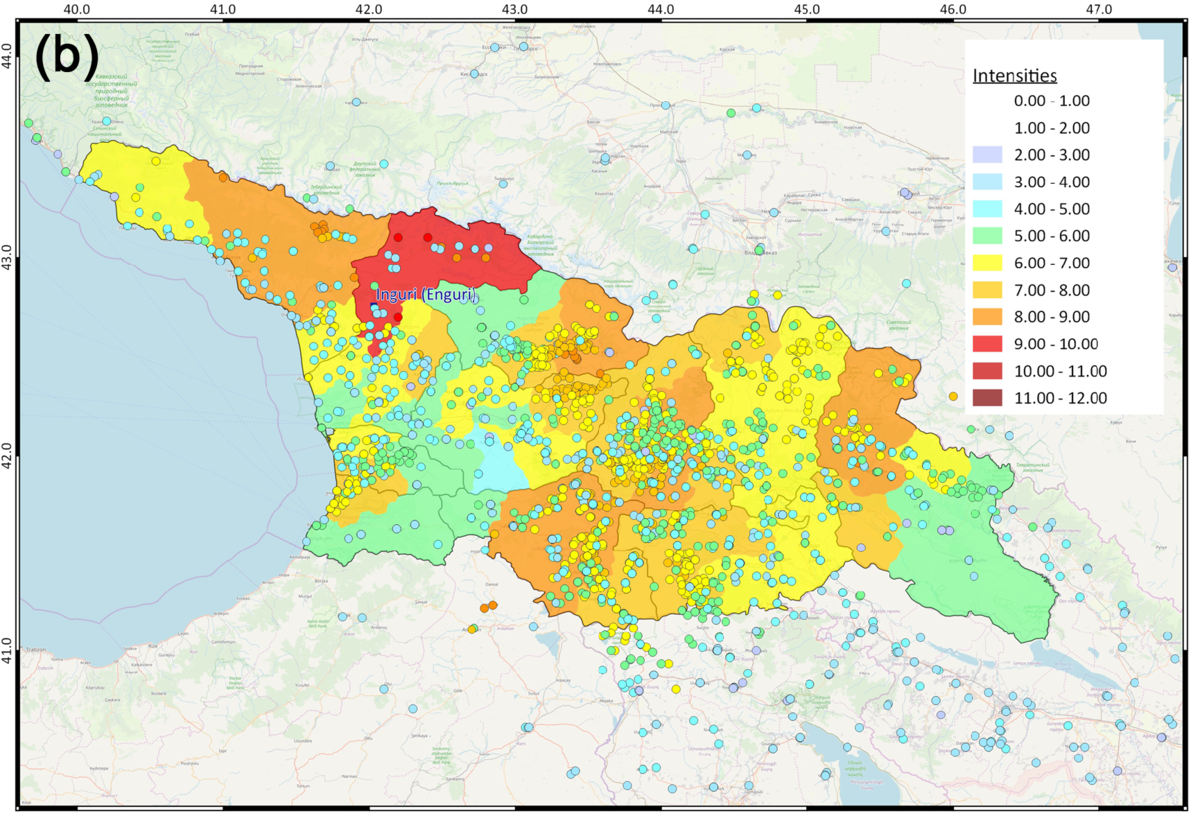Hazard Assessment - Concept for an integrated and modular early warning system (CEDIM)
The aim of this work package is to develop a concept for a modular and sustainable early warning system to assess the hazard situation at the Enguri dam. For this purpose, a hazard analysis for various extreme events or critical impact factors at the dam is carried out. In addition, information from the monitoring systems currently under construction will be integrated with regard to the relevant key parameters. For the implementation, the following parts are relevant, which are interdisciplinary managed by IMK-TRO, GPI, and ITES:
- Statistical precipitation analysis in the context of climate change
First, a hazard analysis of the heavy precipitation in the region around the dam will be carried out. In addition to a suitable definition of extreme heavy precipitation events based on the climatological context, this includes extensive statistical analyses. In addition, the effects of past dry and wet periods on the region and the dam will be investigated. Since climate change is expected to change the statistical distribution of precipitation probabilities and – in some regions – also the precipitation regime, it will be further investigated how these characteristics will develop in the future.
- Estimation of the hazard from various extreme events
In the second part, a holistic and comparative hazard analysis is carried out by including further relevant extreme events or their statistical occurrence probability (hazard; e.g. earthquakes, unplanned load changes or sediment transport, inflow regimes). For example, for the estimation of earthquake hazard, both a historical intensity analysis (see figures) and an analysis of the available information of the Ingirishi fault are carried out. In order to estimate the final seismic risk for the Enguri Dam, precise exposure components and the associated vulnerability functions must be known. Therefore, the structures of the dam and its seismic resistance will be studied in detail.
- Development of a concept for a modular early warning system
Subsequently, the results obtained by all project participants will be combined (risk assessment, identification of key parameters through monitoring, cascade effects, appropriate monitoring measures) in order to use them for the modular early warning system. It is important to take sufficient account of the different time scales of the relevant processes. For example, information on short-term hazards such as earthquakes must be processed differently than information on longer-term factors that lead to a hazard (e.g. sediment transport). The operator Engurhesi and the local authorities are involved in the development. The objectives for the concept of the modular and sustainable early warning system are:
(i) To increase protection and enable a safe operation of dams,
(ii) To improve the resilience of the dam and a sustainable energy system,
(iii) Minimising the risks to the population.
In the concept, the long-term benefit of the early warning system should not only be given by the fact that it is based exclusively on statistical risk assessments, but also by the fact that it generates increased adaptability through the use of self-learning algorithms, thus taking into account the growing uncertainties and unpredictability. The complex and fine-meshed sensor network, which enables real-time monitoring of many relevant parameters at and around the dam, allows not only the creation of physical-numerical models, but also, due to the large data situation – with regard to parameter heterogeneity (e.g. weather, hydrology) ¬– AI-based prediction models. Thus, a hybrid modelling approach leads to a better understanding of non-linear dynamics, which makes the effects on the building more predictable.


